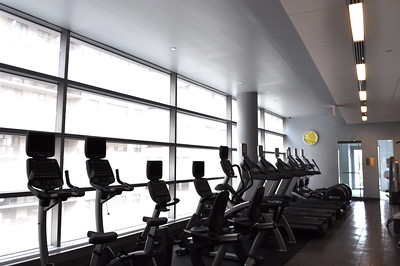Earlier this week, Bridge Michigan published an interesting interview with Michael Stack. Stack owns three Applied Fitness Solutions locations in Southeast Michigan. He is also a founding board member of the Michigan Fitness Club Association, a fitness center lobby group. According to Stack, the fitness industry needs government cash to remain viable.
According to Stack, the pandemic has claimed nearly 1 in 5 fitness centers in the United States. By the end of 2021, that figure may look more like 1 in 3. Industrywide, revenues fell 50%-60% in 2020. Things are not looking good for the fitness industry, but that may not all be the pandemic’s fault.
Virtual fitness platforms like Peloton, Mirror and Tonal were all gaining traction just as the pandemic arrived. They appeared as a ready-made solution for people looking for in-home workout options. Peloton’s sales grew by nearly $760M during the pandemic. Mirror collected about $170M in sales in 2020, and Tonal rang up about $80M in 2020 sales. That’s just over $1B in sales of home fitness equipment in one very crazy year. Users can spend thousands of dollars for the equipment itself, and additional subscription fees for content.
Those folks aren’t coming back to the fitness center.
Fitness Center is in bad company
When asked to identify the kind of fitness center that would likely to suffer most, Stack’s answer was telling.
The smaller mom and pop business that has some sizable infrastructure built up will struggle, now that people have so many choices and the ability to engage with multiple different platforms.
The one that could survive is the solo practitioner. So if you’re a really great yoga instructor and you’re cool teaching 25 yoga classes a week, and the only payroll cost you really have is yourself…that type of studio will survive.
The big boxes and the big players, they’ll survive, but the mid-range places that have reasonably high payroll costs because they have a number of practitioners and trainers working for them, they’re going to get dinged in two ways. They’re not going to be able to compete with the big players because they just don’t have the kind of capital they would need to build the technology infrastructure.
Michael Stack
The Health and Fitness Center at WCC isn’t a mom-and-pop shop. It’s not a big box club, and it’s not made up of solo practitioners. In other words, it’s in the vulnerable one in the middle.
Is fully reopening enough?
The most interesting response Stack gave came in response to this question:
Is fully re-opening enough at this point?
“This is a low-profit-margin business in the first place. On a good day, we’re happy about 20 to 25 percent. If you start to get to a point when they are getting to less than 10 percent, then you have the concern of running negative really, really fast and it becomes unsustainable.The Fitness Center model isn’t dead, but it should be
A lot of gyms and fitness centers are at a point where they’re at those very low profit margins, if not negative.… We’re just assuming the pent-up demand will eventually cause our revenues to rebound and get back to those reasonable profit margins, and that’s a dangerous assumption to make. We just don’t simply know what the consumer is going to do.”
This is a low-profit-margin business in the first place.
The WCC Administration has pinned its “other revenue” hopes on an expensive-to-provide, low-profit-margin business. That’s what I’ve been saying all along. It was foolish of the WCC Trustees to take money away from college operations to build a business that – on a good day – generates a marginal profit. This “business opportunity” has very high maintenance costs and low return potential.
Many of the maintenance issues at any health club are “life and safety” issues. Not the kind of “life-and-safety” issues that require the College to spend millions on new wireless IT infrastructure, but rather, actual life-and-safety issues – the kind that make people sick, or that could potentially kill someone.
What funding the fitness center will mean to you
Let me rephrase this, just so I am being 100% clear. The WCC Trustees authorized – as a speculative money-making venture – the construction of an expensive, high maintenance building with little-to-no academic value. At the outset, the Trustees claimed that the Health and Fitness Center would support itself.
Unfortunately, the industry they chose to dabble in has a low potential to make money, even when business is very good. The Trustees borrowed $17M to build the building, which the taxpayers must repay, come Hell or high water. The loans will not come off the books until 2027. They use money the taxpayers provided for “college operations” to pay the construction loans back. (Debt payments are not an operational expense.)
At its peak operation, the Health and Fitness Center had more than 7,000 subscribers. Following the pandemic, that number fell to about 2,500. Because the pandemic has all but destroyed the business that operates inside the high-cost, high-maintenance building, the WCC Trustees use money the taxpayers intended for education to prop up the Health and Fitness Center. It is anything but self-supporting.
The WCC Trustees believe this model has been successful in generating cash for WCC. (It has not.) They want to extend this taxpayer-funded model to a hotel and convention center – both of which are high-cost, high maintenance buildings.
The Michigan Fitness Club Association wants government support to help their members survive the pandemic. The WCC Health and Fitness Center already receives enormous taxpayer support.
Unfortunately, it doesn’t work. At least, not for the taxpayers.
Photo Credit: Rose NYC , via Flickr































